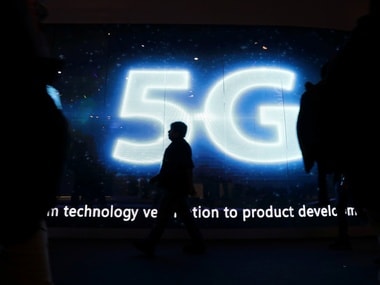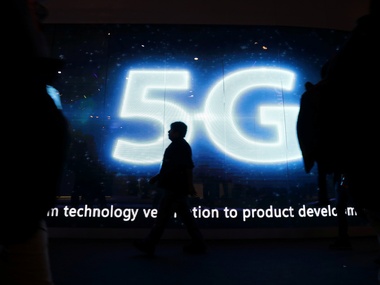It is estimated that the global 5G value chain will generate $3.5 trillion in economic output by 2035. India is also keen to board the 5G bus sooner than later. Recent events such as demonetisation and low mobility price points have leapfrogged India to a pervasive digital adoption over the past 18 months.
India’s digital footprint is quite prolific—over 1.2 billion mobile subscribers, 450 million social media users and 200+ million Indians using mobile banking and digital payments. At the current pace, it is estimated that India’s digital economy has the potential to reach $1 trillion by 2025.
The launch of 5G-enabled technologies is expected to be transformative in the telco and other industries by unlocking various disruptive new technologies. Hence, telecom infrastructure and services are increasingly emerging as critical determinants of a global economy’s growth and well-being. With an inherently mature IT/ITeS sector, India stands poised to benefit from harnessing new digital technologies and platforms to unlock productivity, as well as to reach unserved and underserved markets; thus catalysing economic growth and development, generating new-age jobs and livelihoods, and ensuring access to next-generation services for its citizens. A recent Deloitte study estimated the Indian digital economy’s contribution is at 5 percent of the GDP. This is likely to grow by 1.5-1.75 times in the next 2-3 years. The telcos will need to make significant investments to make 5G a reality including investments in 5G spectrum (the recommended base price is nearly 30-40 percent higher than other markets that have seen a 5G launch such as South Korea and the US), fiberisation and backhaul, and network densification. [caption id=“attachment_4236523” align=“alignleft” width=“380”]  Representational image. Reuters.[/caption] However, the telecom ecosystem enabling this continues to be under severe stress. Some of the long incumbent and leading telecom operators are under significant strain with an overall debt of Rs 4 lakh crores with around 25 percent of this pertaining to licensing fees and related dues. A sustained hyper-competitive environment and a multitude of indirect levies ranging from telecom regulatory fees linked to revenues, custom duties on imported telecom gear and the GST regime of 18 percent have further added to the financial stress. This situation has led to most players operating at negative EBITDA. Some incumbent players have begun reconsidering their future investment plans for 5G and national broadband, which are slated to form the fulcrum of the government’s ambitious Digital Communications Policy. If India has to become a $5 trillion economy sooner, telecom will be one of the pillars on which the foundation would be laid. The task before policymakers is to ensure that the advantages of the telecom infrastructure and related technologies support its divergent demography, economic conditions and urbanisation. Some key expectations of the sector from the upcoming Budget are:
- Investment incentives to be offered, either by way of accelerated depreciation or through additional allowance in respect of capital investments, to attract foreign telecom gear manufacturing companies to set up manufacturing facilities in India. This will, in turn, propel the government initiative for job creation and also boost small and medium enterprises in the sector.
- Incentive plans and relaxation from tax/regulatory fee for initial years on 5G acquisition to ease the pain of financial outgo in post 5G scenario.
- Revisit spectrum charges and other levies faced by the telecom companies and potentially offer amnesty schemes for past dues.
- Clarify the impact of certain amendments introduced by the nce Act 2012. For example, royalty definitions do not apply to payments against Interconnection Usage Charges (IUC). It is needed to clarify that payments made for bandwidth arrangements are pure service arrangements and this will go a long way to reduce litigations pending in various courts.
- Introduce a litigation settlement scheme, similar to Sabka Vishwas—Legacy Dispute Resolution Scheme to settle long-pending disputes.
- Extending deduction of 200 percent of expenditure incurred on research and development in telecom, to bring in new technologies and the same should be extended beyond 2021.
- The airtime sold by telecom companies through distributors is on a principal-to-principal basis and has been a matter of extensive litigation. In the interest of both telecom companies and the revenue authorities, special provisions may be introduced to tax the profits earned by such distributors. Further, to improve the tax base and collections in tax, such revenues may be subject to tax deduction @ 1 percent at the source. Seeing the revenues of telecom companies, it is not difficult to calculate the expected increased cash in tax flows for the government.
- Abolishing DDT and making dividends taxable in the hands of a shareholder would make foreign investors eligible for a credit of tax in their home countries, thereby improving the return on their investment.
- In order to address the situation of companies being unable to claim MAT credit due to lapse of the 15-year time window, necessary amendments should be made in the law by removing the time period within which set off of MAT credit shall be claimed/
Launch and adoption of 5G offers a rare opportunity for India to play its part in developing an inclusive and indigenous technology by building R&D capabilities, developing homegrown intellectual property and design-led manufacturing. To achieve these macro objectives, the telecom sector needs a helping hand right now. As such, the government can take some definitive steps to create an environment that provides the necessary impetus for the next evolution of growth in the sector and resolve some long outstanding issues. (The writer is Partner, Deloitte India) Follow full coverage of Union Budget 2020-21 here


)
)
)
)
)
)
)
)
)



